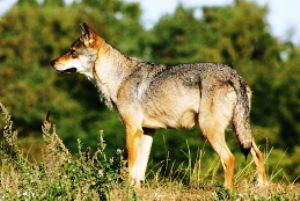Kingdom animalia
Phylum Chordata
Class Mammalia
Order Diprothodontics
Family Macropodidae
Gender Macropus
Kangaroos are mammals belonging to the marsupial subclass. Such individuals have a narrow skull, with a smaller and simpler brain than that of placental mammals. Also, females have two lateral vaginas; and males, forked penis, with the scrotum located in front of it. One of the best remembered characteristics of marsupials is the presence of the marsupium, found in most species. In kangaroos, it is a pouch inserted into the abdomen of females.
It is in the baby carrier that the pups spend most of their development, since they are born quite immature, at approximately one month of gestation. They climb the mother's body, move to that bag, attach themselves to one of the teats found there, and remain in this location for six to eight months, completing its development and acquiring conditions to live in an environment external.
After this step, the puppy eventually moves to this structure, most of the times with the objective of being suckled and in others, to protect himself from potential dangers. Females are able to reproduce throughout the year, and each individual has an average life expectancy of fifteen years.
Kangaroos have a pointed snout, short and dense fur, large raised ears, long feet, hind legs larger and more developed than the front, and strong and quite strong tendons. rubber bands. Due to this anatomy, they are excellent jumpers, being able to reach 60 km/h while moving in such a way. They also have a long, hairy and muscular tail, helping balance while jumping, and as support when standing.
Do not stop now... There's more after the advertising ;)
They are found in Australia, New Guinea and some islands in these regions, such as Tasmania. The biggest species are the Macropus rufus, popularly called the red kangaroo, and the Macropus giganteus, or gray kangaroo; which can reach 1.80 meters in height and ninety kilos.
They feed on vegetables and, eventually, fungi. They are preyed on by the Australian wild dog and our species, which targets their meat and leather. In addition, many farmers kill them, alleging that they are destroying their improvements. Due to these facts, some species have been declining, one is in extinction, but some have multiplied a lot, due to the abundant supply of food and shelter resulting from activities human beings. In the latter case, there are specific laws that deal with the subject, allowing commercial hunting by licensed professionals, through a system of quotas, reviewed annually.
Currently, 14 species of the genus Macropus are known. See below what they are and their conservation status, according to the International Union for the Conservation of Nature and Natural Resources (IUCN):
EXTINCT (EX)
Macropus grayi
NEAR THREATENED (Near Threatened, NT)
Macropus Bernardus
Macropus parna
MINIMUM EXTINCTION RISK (Least Concern, LC).
Macropus agilis:
Macropus antilopinus
Macropus dorsalis
Macropus eugenii
Macropus fuliginosus
Macropus giganteus
macropus sister
Macropus parryi
Macropus robustus
Macropus rufogriseus
Macropus rufus
By Mariana Araguaia
Graduated in Biology



